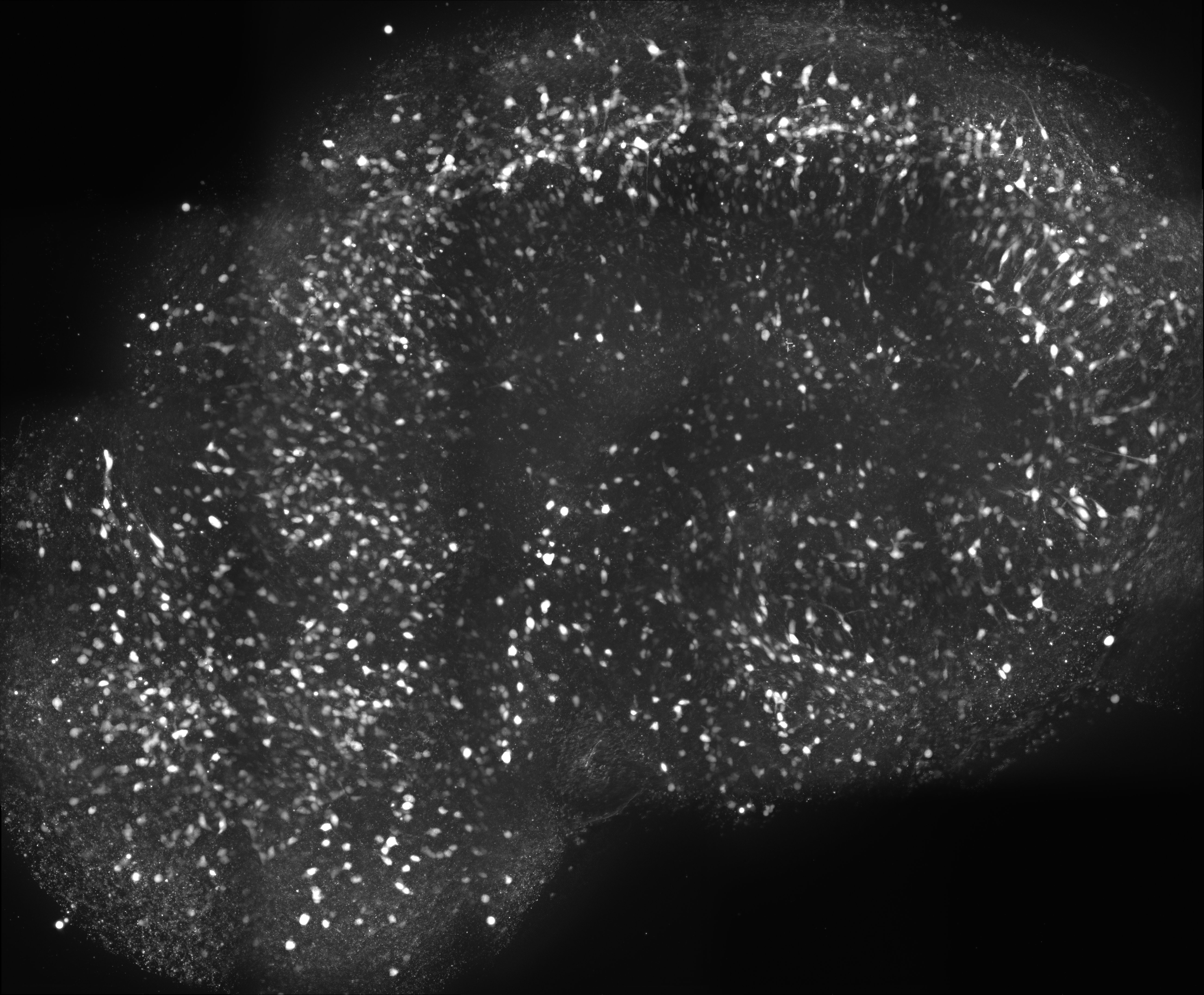AAV pCAG-FLEX-tdTomato-WPRE in Mouse (AAV9)
Addgene #51503-AAV9
- Data Submitted By
- Kyle Lillis
- Submission Date
- July 10, 2019
- Publication Date
- July 10, 2019 (modified May 16, 2023)
- Abstract
- Not provided
Any further use of this image requires permission from the lab who submitted the data.
- Vectors Used
-
AAV pCAG-FLEX-tdTomato-WPRE
Addgene #51503-AAV9 -
pGP-AAV-syn-jGCaMP7f-WPRE (AAV9)
Addgene #104488-AAV9
Virus & Injection
Virus 1
- Virus Name
- AAV pCAG-FLEX-tdTomato-WPRE
- Serotype
- AAV9
- Source
- Addgene
- Catalog Number
- 51503-AAV9
- Promoter
- CAG
- Cargo Type
- Control
- Injection Titer / Dose
- 1.00E+13 GC/mL
- Injection Volume
- 5 μL
- Injection Rate
- Unknown, manual injection
- Injector Material
- Not provided
- Injection Site / Route
- Intracerebroventricular (ICV), NeuroNames ID : 2497
- Additional Details
- Imaging was performed on hippocampal organotypic slice cultures. Interneurons expressed the construct.
Virus 2
- Virus Name
- pGP-AAV-syn-jGCaMP7f-WPRE (AAV9)
- Serotype
- AAV9
- Source
- Addgene
- Catalog Number
- 104488-AAV9
- Promoter
- Synapsin
- Injection Titer / Dose
- 1.00E+13 GC/mL
- Injection Volume
- 5 uL
- Injection Rate
- Unknown (manual)
- Injector Material
- Not provided
- Injection Site / Route
- Cerebrospinal fluid (CSF): Intracerebroventricular (ICV)
- Additional Details
- pGP-AAV-syn-jGCaMP7f-WPRE (AAV9) was co-injected but is not shown in the image.
Other Details
- Species
- Mouse
- Strain or Cell Line
- Dlx5/6-cre
- Source
- Jackson Labs
- Stock Number
- 008199
- Age at Injection
- P1
- Time After Injection
- 1 week
- Detection Method
- Direct fluorescence
- Assay & Results
- ICV injections at P0-P1 of AAV9 works very well at producing widespread expression throughout the brain, particularly in the hippocampi. The tool was intended to generate red fluorescence in all dlx-cre-expressing interneurons. The pattern of expression matched that expected and was very bright.
- Tips & Comments
- Vectors with the CAG promoter make for very bright expression - I would probably use a smaller volume of AAV in the future, for the sake of minimizing the impact of injection.
